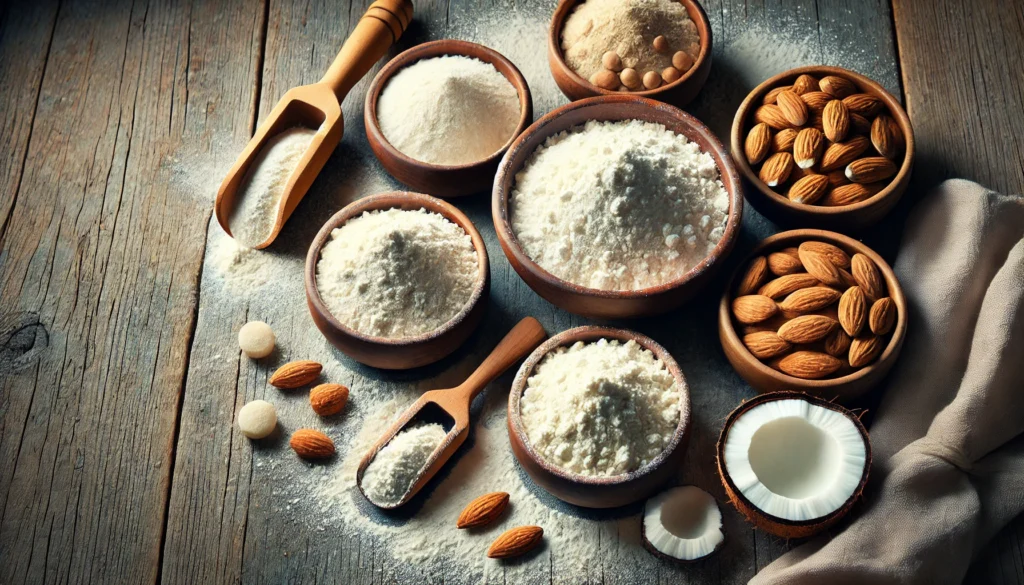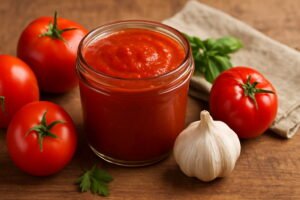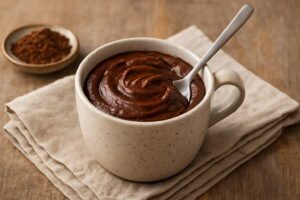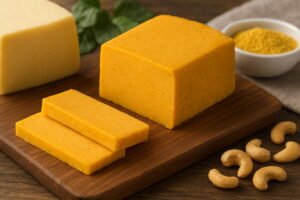Are you following the paleo diet and looking for a cornstarch alternative? Whether you’re avoiding cornstarch due to allergies or simply trying to limit your intake of processed foods, there are several paleo-friendly substitutes that can be used in its place. These alternatives not only provide a similar thickening effect but also offer additional nutritional benefits that cornstarch lacks.
One of the most popular paleo alternatives to cornstarch is arrowroot powder, which is derived from the root of the arrowroot plant. Arrowroot powder is a gluten-free and grain-free option that works well as a thickening agent in soups, stews, sauces, and baked goods. It has a neutral flavor and a smooth texture, making it a versatile ingredient in many recipes. Additionally, arrowroot powder is rich in potassium, iron, and B vitamins, making it a more nutrient-dense option than cornstarch.
Understanding Paleo Diet Fundamentals
Defining Paleo Principles
The Paleo diet, also known as the Paleolithic diet or the caveman diet, is a dietary plan based on the foods that our ancestors ate during the Paleolithic era. This diet emphasizes consuming whole, unprocessed foods such as meat, fish, fruits, vegetables, and nuts. It excludes processed foods, grains, dairy, and legumes, as these foods were not available during the Paleolithic era.
The Paleo diet is based on the idea that our bodies are genetically adapted to the foods that our ancestors ate. Therefore, consuming the same foods that our ancestors ate can help us maintain a healthy weight, reduce inflammation, and improve overall health.
Why Cornstarch Isn’t Paleo
Cornstarch is a common ingredient used in many processed foods, sauces, and gravies. It is made by grinding corn kernels into a fine powder. While cornstarch is a gluten-free and low-fat thickener, it is not considered Paleo.
Cornstarch is a refined product and does not fit into the Paleo diet’s principles of consuming whole, unprocessed foods. Additionally, corn was not available during the Paleolithic era, so our bodies are not genetically adapted to consuming corn or its derivatives.
If you are following a Paleo diet, there are several alternatives to cornstarch that you can use to thicken sauces and gravies. Some of these alternatives include arrowroot powder, tapioca starch, and potato starch. These alternatives are gluten-free and can be used in the same way as cornstarch.
Top Paleo Alternatives to Cornstarch
If you’re following a paleo diet and looking for a substitute for cornstarch, you’re in luck! There are several paleo-friendly alternatives to cornstarch that you can use in your cooking and baking. Here are three of the best:
Arrowroot Powder
Arrowroot powder is a starchy flour that comes from the root of the arrowroot plant. It’s a popular alternative to cornstarch because it has a similar texture and thickening power. Arrowroot powder is also paleo-friendly because it’s made from a plant source and doesn’t contain any grains.
To use arrowroot powder as a substitute for cornstarch, simply use the same amount of arrowroot powder as you would cornstarch. Arrowroot powder is a great option for thickening sauces, gravies, and soups. It’s also a good choice for gluten-free and paleo-friendly baking recipes.
Tapioca Flour
Tapioca flour is another paleo-friendly alternative to cornstarch. It’s made from the cassava root, which is a starchy tuber. Tapioca flour has a similar texture and thickening power to cornstarch, making it a great substitute.
To use tapioca flour as a substitute for cornstarch, use the same amount of tapioca flour as you would cornstarch. Tapioca flour is a good option for thickening soups, stews, and sauces. It’s also a good choice for paleo-friendly baking recipes.
Coconut Flour
Coconut flour is a paleo-friendly flour that’s made from ground coconut meat. It’s a great alternative to cornstarch because it’s grain-free and has a similar texture and thickening power. Coconut flour is also high in fiber and protein, making it a healthier option than cornstarch.
To use coconut flour as a substitute for cornstarch, use a quarter of the amount of coconut flour as you would cornstarch. Coconut flour is a good option for thickening sauces and gravies. However, it’s not recommended for thickening soups because it can clump together and become lumpy.
In conclusion, arrowroot powder, tapioca flour, and coconut flour are three paleo-friendly alternatives to cornstarch that you can use in your cooking and baking. They all have a similar texture and thickening power to cornstarch, making them great substitutes. Try them out in your favorite recipes and see which one works best for you!
How to Use Paleo Alternatives in Cooking
If you’re looking for a paleo alternative to cornstarch, you have several options to choose from. The most common paleo-friendly substitutes for cornstarch include arrowroot powder, tapioca flour, and coconut flour. Here are some tips on how to use these substitutes in your cooking.
Thickening Soups and Sauces
If you’re looking to thicken soups or sauces, arrowroot powder and tapioca flour are great alternatives to cornstarch. Arrowroot powder is a fine white powder that comes from the root of the arrowroot plant. It has a neutral taste and is a great thickener for soups and sauces. Tapioca flour, on the other hand, is made from the cassava root and has a slightly sweet taste. It’s a great thickener for fruit-based sauces and desserts.
To use arrowroot powder or tapioca flour as a thickener, mix the powder with a small amount of cold water to form a slurry. Then, add the slurry to your soup or sauce and stir until it thickens. Be careful not to add too much of the slurry, as it can make your soup or sauce too thick.
Baking Tips and Tricks
If you’re looking to use a paleo alternative to cornstarch in baking, coconut flour is a great option. Coconut flour is made from ground coconut meat and is a great substitute for wheat flour in paleo baking. It has a slightly sweet taste and is very absorbent, which makes it a great thickener for baked goods.
When using coconut flour in baking, it’s important to remember that it absorbs a lot of liquid. You’ll need to use less coconut flour than you would with other flours, and you’ll need to add more liquid to your recipe to compensate. A good rule of thumb is to use 1/4 to 1/3 cup of coconut flour for every cup of wheat flour in your recipe.
In conclusion, using paleo alternatives to cornstarch is easy and can be a great way to add variety to your cooking. Whether you’re thickening soups and sauces or baking delicious treats, arrowroot powder, tapioca flour, and coconut flour are all great options to consider.




